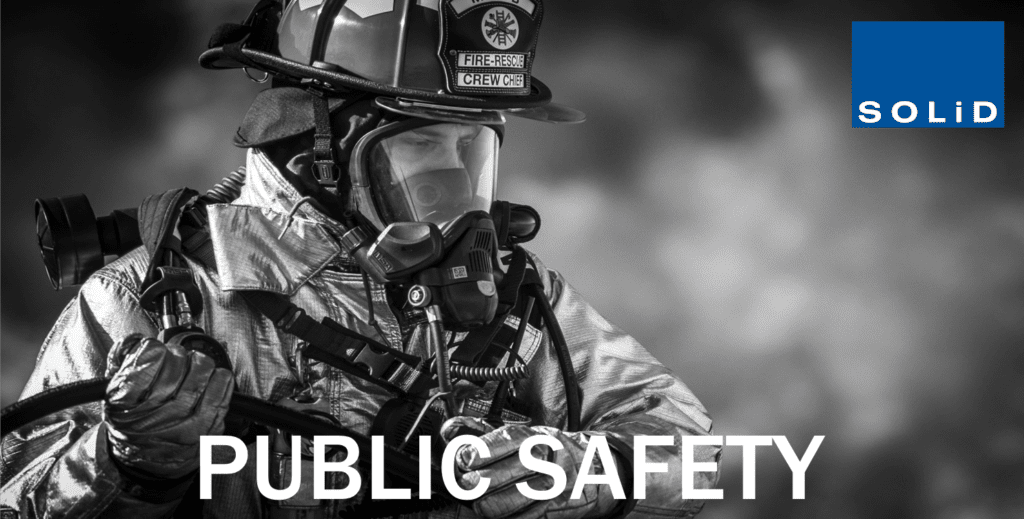Third of a Three-Part Blog Series
In the first two blogs in “Responsible Communications in the Enterprise” series, I talked about the responsibility of the Middleprise to provide coverage to tenants and occupants in a building; and also to first responders. In this blog, I’ll talk about the impact of building codes and standards.
The Impact of Building Codes
Building codes exist to ensure that buildings are designed and constructed with certain safety standards, and there are severe penalties for developers who cut corners. We all benefit and expect that the properties we work in are up to code. It’s understood that these building codes include public safety categories like carbon monoxide and smoke detectors, fire alarms, and sprinkler systems. Recently, regulating the minimum level of communication available for first responders has begun to come under the purview of the local planning departments and building codes.
How it Works
The process of how these codes are developed and become enforceable ordinances is straightforward.
Most building and fire codes are developed by non-profit organizations, such as the International Fire Code (IFC) and National Fire Protection Agency (NFPA.) Next, your state and local authorities adopt these codes as ordinance. Sometimes they customize or amend them to suit geographic or community needs. Building codes in your area are enforced by an authority having jurisdiction (AHJ) which is frequently a fire official like a fire marshal, or a building code inspector sent from your local municipality’s planning department.
The codes that impact your properties may vary from location to location because the codes must be adopted, and can be amended, by your local authorities.
Organizations Responsible for Code Development
Important acronyms with which to acquaint yourself are:
- IFC – International Fire Code. The IFC is created by the International Code Council (ICC) which is a non-profit organization dedicated to developing a single set of comprehensive and coordinated national model construction codes.
- NFPA – National Fire Protection Agency. A non-profit organization devoted to eliminating death and injury due to fire and related hazards. One of the NFPA’s main activities is the development of codes and standards.
Evolution of Standards
Just as it has with fire alarms, sprinklers, and other life safety equipment, the industry is working through the steps to the development of a standard on in-building communications. Each version of the NFPA and IFC codes brings slight changes and clarifications to the sections pertaining to in-building communications systems. Organizations like the Safer Building Coalition have emerged to help all stakeholders transform the codes/standards and the technologies required for effective, public safety, in-building communications needed during emergency incidents.
Solutions and Complexities
The approach for distributing a public safety signal inside a building is the same as distributing a cellular signal inside a building, after all they are both radio signals. You get a signal source into the building (either by capturing the wireless signal outside the building or generating the signal inside the building), and, using fiber or copper wires with a host of antennas, that send signal throughout a building.
There are technical differences and nuances to each system, and how they may work together. There are three basic approaches for enabling both commercial cellular and public safety indoors:
- Separate or parallel DAS layers that have discrete infrastructure including cable feeds and antennas for cellular and public safety.
- Hybrid or separated DAS layers that have separate cable infrastructure (i.e. public safety on one fiber from the head-end and cellular on another fiber), but then combine both services on the same antenna.
- Converged DAS where commercial cellular and public-safety frequencies are combined on the same DAS infrastructure. This is the least common and brings the potential of the two systems interfering with one another.
Benefits of Working with an Expert
A wireless integrator can help you determine local codes and regulations, determine if you need to install a public safety DAS system, and recommend the best approach for your property.
When you start discussing NFPA 72 or IFC510 requirements its critical that you do so with local public safety communications experts like integrators, VARs and Distributors. Establish that relationship with a local expert and specifically one that is working with the AHJ in their area to design and install a system as they are intimate with the knowledge that the AHJ in your area can add or remove requirements from the IFC and NFPA requirements.
In Summary
In-building public safety is addressed by both cellular networks and first responder radio networks. While installing both are critical in the event of an emergency, each have unique drivers and implementation requirements. You need to understand how local AHJs are implementing NFPA 72 and IFC 510 requirements, factor in public cellular coverage and capacity as part of your building’s public safety agenda and always work with a partner who understand RF network design requirements that will ensure your building is connected and safe.
Check out some recent videos on Public Safety by Ken Sandfeld and Gregg Glenn here.
